As an intelligent module designed for edge AI computing scenarios, the Atlas 200 AI Acceleration Module (Model 3000) leverages the powerful performance of the Ascend 310 chip, flexible application modes, rich interface resources, and comprehensive operational support, making it an ideal choice for various fields such as smart security, smart cities, drone systems, and intelligent manufacturing.
1. Hardware Architecture and Design
1.1 Compact Physical Structure
The Atlas 200 AI Acceleration Module (Model 3000) adopts a high-density integrated design with physical dimensions of 55mm x 45mm x 4.3mm (standard form), supporting a 6mm thickness expansion through a replaceable connector scheme. The module’s surface features an anodized aluminum heat dissipation shell, with built-in multi-layer graphene thermal pads that improve thermal conductivity efficiency by 40% compared to traditional solutions. The gold finger area is equipped with 132 signal contacts, including 4 pairs of differential clock signal lines and 16 groups of high-speed PCIe channels, meeting industrial-grade seismic resistance standards (10G vibration intensity).
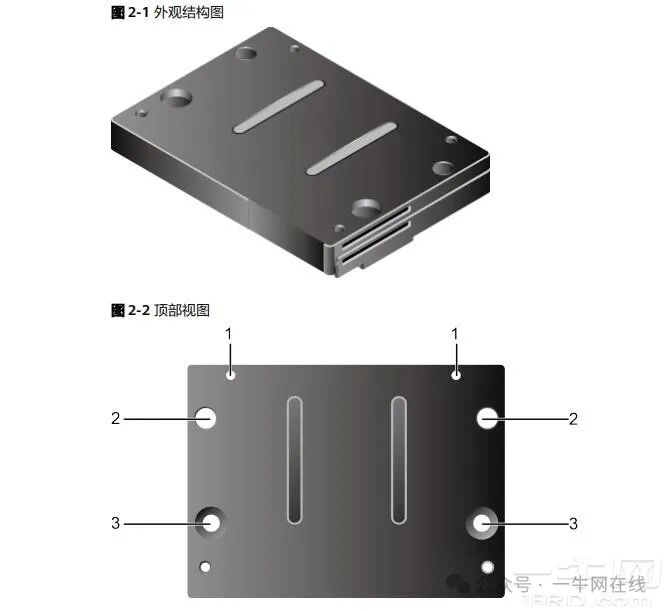
1.2 Key Signal Interface Definitions
The MXM 3.0 interface at the module’s edge defines three categories of core signal groups:
Computing core interface: PCIe 3.0 x4 channels (supports CLKREQ power-saving control), LPDDR4X-2133 memory bus
Extended function interface: RGMII Gigabit Ethernet PHY, USB 3.0 SuperSpeed differential pairs, I2C bus (supports 1MHz clock rate)
System management interface: PMIC_VDD (power management), JTAG debugging port, temperature sensor ADC input
Specially designed ESD protection circuits can maintain normal operation under contact discharge conditions of 8kV, complying with IEC 61000-4-2 standards.
2. Multi-Modal Application Scenario Analysis
2.1 Main Processor Mode
When the module operates in autonomous control mode, its built-in 8-core Cortex-A55 processor cluster can support a complete Linux system. Typical configuration schemes include:
– Mounting 32GB of storage space via the eMMC 5.1 interface
– Directly connecting a network camera (supporting up to 4 channels of 1080P input) via the RGMII interface
– Driving an OLED status display via the SPI bus
In this mode, developers can directly deploy lightweight AI inference services on the module, such as implementing a facial recognition payment system in smart retail cabinets, with measured end-to-end processing latency of less than 300ms.
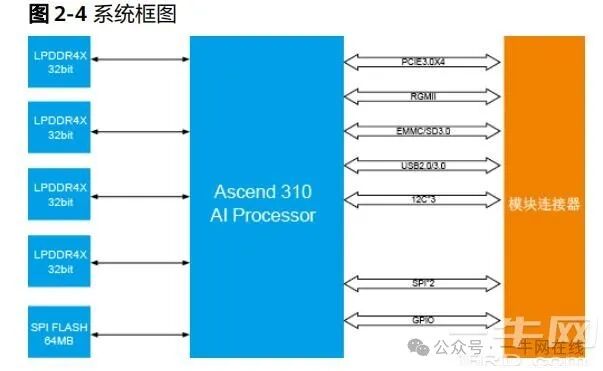
2.2 Co-Processor Mode
In this mode, the module acts as a peripheral expansion unit, interacting with the main CPU through GPIO_12 (wake signal) and GPIO_15 (status indication). Typical application features include:
– The main control side sends control commands via the I2C bus (standard SMBus protocol)
– Using zero-copy DMA mechanisms to transfer video stream data
– Supporting dynamic voltage frequency scaling (DVFS), with idle power consumption reduced to 0.5W
In drone obstacle avoidance systems, this mode can achieve real-time environmental perception calculations within a 200ms cycle, improving energy efficiency by 8 times compared to pure CPU solutions.
2.3 PCIe Slave Device Mode
As a PCIe endpoint device, the module needs to be deeply integrated with the host system:
– The hardware layer must ensure REFCLK± clock jitter is less than 1ps RMS
– The driver layer implements MSI-X interrupt service routine registration
– The application layer calls AI computing power through the OpenCL 2.0 interface
Data from a smart traffic project shows that, in conjunction with a Xeon E3 host, a single module can simultaneously process 16 channels of video structured analysis, achieving a target detection accuracy of up to 99.2%.
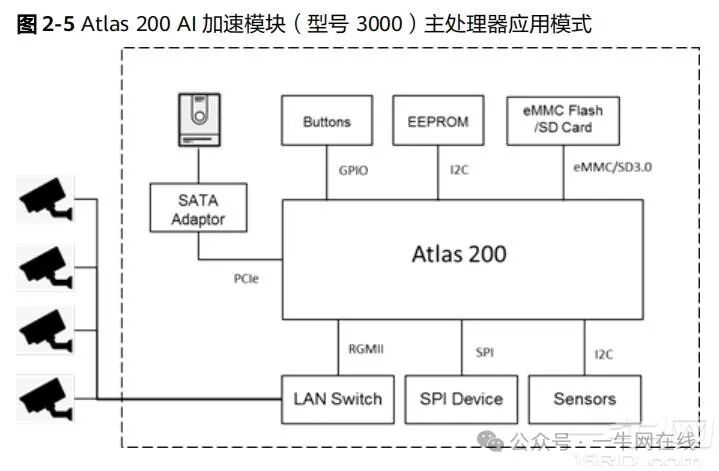
3. Core Performance and Technical Breakthroughs
3.1 Ascend 310 Chip Architecture
The chip uses TSMC’s 12nm FinFET process and integrates two major innovative architectures:
Da Vinci computing core: Each AI Core contains 3 cubic computing units, supporting FP16/INT8 mixed precision operations
Intelligent data routing: Achieves 96GB/s on-chip data throughput through the NOC on-chip network
In natural language processing tasks, the BERT-base model inference speed can reach 450 sentences/second, improving by 2.3 times compared to similar products.
3.2 Video Processing Capabilities
The module is equipped with a dedicated video processing unit (VPU), supporting:
– Multi-channel video parallel decoding (H.265 [email protected])
– Dynamic resolution scaling (real-time conversion from 4K to 1080P)
– Intelligent bitstream control (CBR/VBR dual mode)
In video conferencing scenarios, it can achieve real-time background blurring processing for 16 channels of 1080P video, reducing GPU resource occupancy by 70%.
4. Engineering Deployment and Maintenance Guidelines
4.1 Hardware Installation Specifications
– Mechanical fixation: It is recommended to use M2.5 stainless steel screws, with a locking torque of 0.4N·m ±10%
– Heat dissipation design: The surface of the shell should maintain an airflow speed of over 0.5m/s, and thermal interface materials are recommended to use TG-5000 thermal grease
– Signal integrity: PCIe trace length difference control within 5mil, differential impedance maintained at 100Ω ±10%
4.2 System Debugging Process
– Power-on self-test: Observe the STATUS_LED indicator light sequence (normal is green-blue alternating flashing)
– Firmware burning: Load .hpm format image files via USB DFU mode
– Function verification: Run the command ascendant-dmi -i 0 to check the device health status
– Stress testing: Use benchmark tools for 72 hours of continuous inference task verification
4.3 Operation and Maintenance Management Features
– Dual-channel upgrade: Supports PCIe in-band upgrade (maximum rate of 800MB/s) and USB out-of-band upgrade
– Predictive maintenance: Analyzes temperature trends based on LSTM algorithms, providing a 14-day early warning for potential failures
– Asset traceability: The chip has a built-in OTP storage area to record production batches, test logs, and other key information
5. Typical Industry Solutions
5.1 Intelligent Security Systems
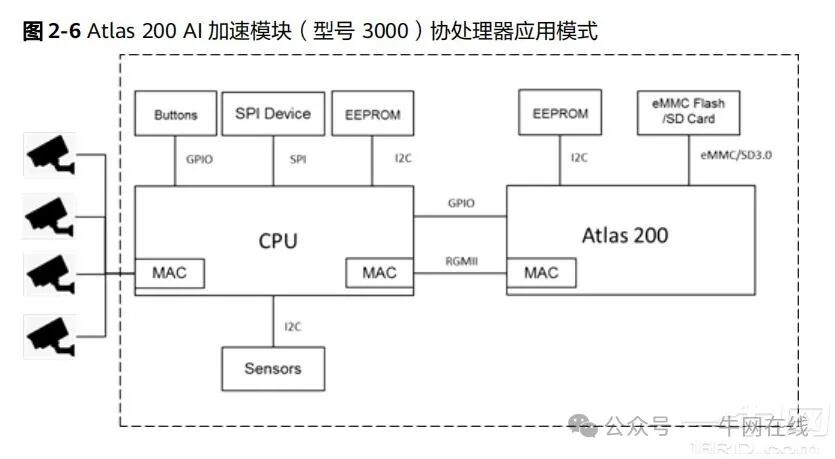
In large park monitoring scenarios, a “3 modules + 1 server” architecture is adopted:
– Each module processes 4 channels of 4K video streams
– Achieves multi-task parallelism for facial recognition, behavior analysis, and license plate recognition
– The overall system power consumption is <150W, saving 60% compared to traditional solutions
5.2 Industrial Quality Inspection Platforms
In conjunction with high-resolution line array cameras, it achieves:
– Surface defect detection with an accuracy of 0.01mm
– High-speed sorting of 1200 items per minute
– Real-time transmission of 16-bit depth image data via USB 3.0 interface
5.3 Autonomous Driving Domain Controllers
In automotive-grade applications:
– Meets ISO 26262 ASIL-B functional safety requirements
– Supports multi-sensor clock synchronization (PPS signal accuracy ±50ns)
– Achieves multi-target tracking decisions within 100ms
6. Technological Evolution and Ecological Development
6.1 Hardware Roadmap
– In 2024, a PCIe 5.0 version will be launched, theoretically increasing bandwidth to 15.75GB/s
– The next generation of products will integrate laser radar point cloud processing acceleration units
6.2 Software Ecosystem Development
– Deeply optimized support for the PyTorch 2.0 framework
– Launch of a customized ONNX Runtime inference engine
– Establishment of an open-source model library (covering 50+ pre-trained models)
6.3 Security Enhancement Directions
– Addition of TEE trusted execution environment (based on Arm TrustZone technology)
– Supports hardware acceleration for SM2/3/4 national secret algorithms
– Introduces physical unclonable function (PUF) anti-tampering technology
The Atlas 200 AI Acceleration Module (Model 3000) is redefining the boundaries of edge intelligent devices through innovative multi-modal design. Whether as an independent computing unit or a heterogeneous acceleration component, its impressive 22TOPS computing power and flexible expansion capabilities provide new possibilities for smart manufacturing, smart cities, and other scenarios. As the Ascend ecosystem continues to improve, this module will play an increasingly important foundational role in the industrialization of AI. Developers need to deeply understand its technical characteristics and strive for excellence in hardware design and system integration to fully unleash the transformative energy of artificial intelligence.
Custom development of DDR and UFS testing projects for various platforms based on MTK pop technology
Dimensity 9400, i.e., MT6991,Dimensity 9300, i.e., MT6989
Dimensity 9200, i.e., MT6985,Dimensity 9000, i.e., MT6983
Dimensity 8400, i.e., MT6899,Dimensity 8300, i.e., MT68977
Dimensity 1200, i.e., MT6893,Dimensity 7300, i.e., MT6878
Dimensity 900, i.e., MT6877Dimensity 720, i.e., MT6877
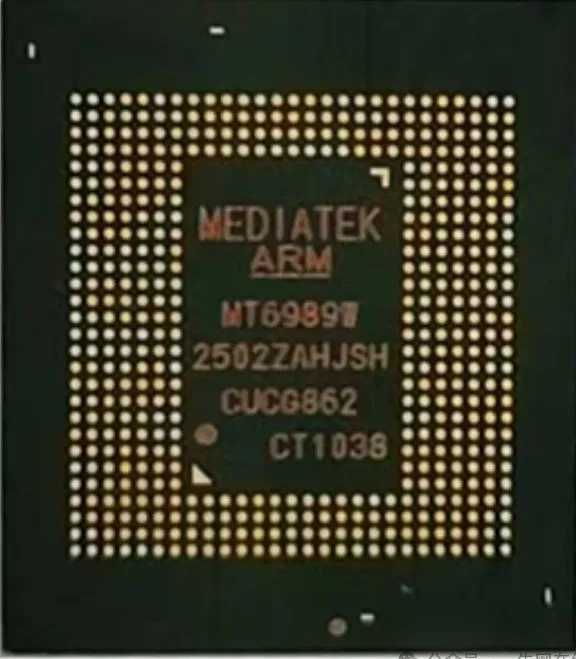
- Custom development of DDR and UFS testing projects for various platforms based on MTK Dimensity 9400/8300/9000/9200/9300 PoP technology
- Dimensity 9400/9300/9200/9000/8300/900/800/720/700/MT6771/MT6765, etc. customization
- RK3576 (8-core 2.3G/6T + supports HDMI/MIPI/EDP multi-screen display + Android/Linux + QT) LGA soldered core board
Featured Articles
-
Qualcomm SM8750P/8650 vs. MTK MT6991/6989 CPU, GPU, storage, and multimedia parameter comparison analysis
-
Qualcomm flagship SM8750/8650/8550/8450 storage, CPU, AI, and multimedia parameter comparison analysis
-
Qualcomm flagship SM8750P vs. mid-range QCS4490/4290/QRB4210 performance (8K camera devices, dual ISP multi-camera support, low power consumption)
-
Performance comparison analysis of Qualcomm flagship chips SM8750P/8650P/QCS8550/8550/8250
-
MediaTek Dimensity 9400 vs. Qualcomm Snapdragon 8gen4 SM8750/SM8750P Android chip comparison
-
Latest tariffs — Analysis of the impact of international brands such as TI/ADI/MAXIM/MOLEX on supply prices in China
-
Opportunities and challenges for the domestic semiconductor industry under a 104% tariff environment
-
Performance comparison analysis of MTK Dimensity mid-range series MT6897/MT6983/MT6878/MT6877
-
Comprehensive list of MediaTek (MTK) 4G/5G platforms and corresponding CPU models + MT6899
-
Performance comparison of MediaTek Dimensity high-end MT6991, MT6899 vs. mid-range MT6878
-
Performance comparison of MediaTek Dimensity high-end MT6991/MT6989 vs. mid-range MT6897
-
Performance comparison analysis of MTK Dimensity mid-range series MT6897/MT6983/MT6878/MT6877
-
Insights | Performance AI comparison analysis of Hisilicon IPC processors hi3403V100/Hi3516DV500/CV610
-
Comparison of RV1106/RV1109/RV1126/SSC8629 and RK3588S chips
-
Performance comparison analysis of MTK Dimensity flagship series MT6991/MT6989/MT6985/MT6983
-
Analysis of SigmaStar chip comparisons: Differences and advantages of SSC30KD/336/337DE/338Q/D/339
-
Comprehensive comparison of AI performance of SigmaStar low-power series chips
-
Comprehensive comparison of AI performance of SigmaStar low-power series chips (Part II)
Recommended Solutions
-
Huawei Atlas 300I A2 inference card (Ascend 910: 20 Da Vinci AI cores + 8 TaiShan cores + 560T INT8 and PCIe4.0)
-
Huawei Ascend AI processor next-generation high-performance Atlas 300V video decoding card (up to 100T + 100 channels of 1080P@25FPS)
-
Huawei Ascend Atlas 200I DK A2 development board (multi-modal AI applications + maximum 8T + 20 channels of 1080p 30-frame decoding + 12 channels of 1080p 30-frame encoding)
-
Huawei Ascend Atlas 200 AI Acceleration Module (Model 3000) Technical White Paper
-
Huawei Ascend 310B (20T computing power + supports -40℃ to +70℃) fully domestically produced computing power motherboard/custom solutions
-
MT6877 5G smart + rugged 5.6-inch PDA (custom solutions available)
-
MT6877 (Dimensity 900: android12/2.0T/UFS2.2/maximum 12G+256G) 5G core board/development board
-
MTK5G-MT6853 (Dimensity 720) core board/development board
-
MT6785 (G95 12nm/A76*2+A55*6/FHD+(2520*1080)/1T) Android 13 4G AI module
-
8-inch MTK 4G/5G smart rugged tablet (custom solutions available)
What is Yiniu Network? Learn about Yiniu Network in 1 minute!
For more information, please open the link above or add the following WeChat, thank you for your attention!

WeChat ID

Long press the QR code to add WeChat